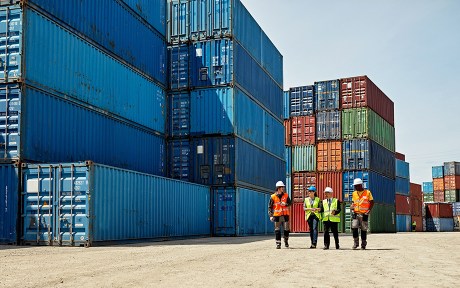

U.S. inflation surged in the early post-COVID period, driven by several economic shocks such as supply chain disruptions and labor supply constraints. Following its peak at 6.6 percent in September 2022, core consumer price index (CPI) inflation has come down rapidly over the last two years, falling to 3.6 percent recently. What explains the rapid shifts in U.S. inflation dynamics? In a recent paper, we show that the interaction between supply chain pressures and labor market tightness amplified the inflation surge in 2021. In this post, we argue that these same forces that drove the nonlinear rise in inflation have worked in reverse since late 2022, accelerating the disinflationary process. The current episode contrasts with periods where the economy was hit by shocks to either imported inputs or to labor alone.
Supply-Side Shocks and Inflation
How did supply-side pressures contribute to the surge in inflation of the early post-COVID period and to the subsequent inflation decline? In our recent paper, we analyze the inflation surge. We examine three supply-side shocks: first, supply chain bottlenecks which increased the prices of imported intermediate inputs (input price shock); second, rising labor market tightness due to declining labor supply, for example resulting from early retirements (labor supply shock); and third, supply chain pressures experienced by foreign competitors, which allowed U.S. firms to expand their markups without losing market share (foreign competitor shock). Through the lens of our model, the combination of the three shocks generated a peak inflation surge of around 3 percentage points above the assumed steady state inflation level of 2 percent, about three-quarters of the rise in core CPI inflation observed during 2021 and 2022. Importantly, the combined shock has an amplified effect in our model: when the shocks hit the economy jointly, inflation increases by 0.7 percentage point more than when they hit separately.
We use the model to analyze the decline of inflation from its peak as the combined shock dissipates. Specifically, we compare the scenario where the inflation peak is generated by the combined shock versus a hypothetical scenario where the input price, labor market, and foreign competitor shocks occur separately and the inflation responses are added up. In the chart below, the blue line represents the pace of disinflation in the scenario when the shocks hit the economy separately. After ten quarters, inflation has fallen by about 1.8 percentage points. The red line shows the inflation path following a joint shock. We find that inflation falls more rapidly in this case, declining by about 2.2 percentage points after ten quarters, more than two-thirds of the inflation surge of 3.0 percent.
Moderation of Inflation Following Joint Shock versus Separate Shocks
Notes:The chart shows the impulse response of core consumer price index (CPI) inflation, that is, all items excluding food and energy The blue line traces out the sum of the impulse response to a separate import price shock, a labor disutility shock, and a competition shock. The red line shows the joint effect of all three shocks simultaneously.
Substitution Between Labor and Imported Inputs Generates Faster Disinflation
Why does a joint shock generate an amplified inflation response in our model? Intuitively, when a joint shock to imported input prices and labor hits the economy, substituting between labor and imported intermediates becomes less effective for firms. In normal times, firms can shift away from any factor experiencing an isolated cost increase. For example, firms could absorb wage pressures in the domestic economy by replacing domestically sourced inputs, which use domestic labor, with imported intermediates from abroad, effectively using foreign labor. When both intermediate input costs and labor costs rise at the same time, as in the immediate post-COVID period, the scope for this substitution is diminished. As a result, firms cannot control costs as effectively, amplifying the cost pass-through into inflation. Moreover, the supply chain problems that foreign competitors experienced in the immediate post-COVID period reduced the effective competition faced by domestic producers, further increasing domestic firms’ pass-through of adverse shocks into prices. We provide empirical support for this amplification mechanism in our paper.
Turning to the disinflation, according to our model the same forces that generated the inflation surge have worked in reverse. Easier access to foreign inputs, coupled with a less tight domestic labor market, have made it easier for domestic producers to substitute again between labor and intermediates. For example, reduced supply chain bottlenecks might make it more appealing to source additional inputs from abroad to contain wage pressures. Our model suggests that this ability to substitute between inputs has contributed to a more rapid decline in inflation than if either input price pressures or labor market pressures had eased in isolation. Increased competition with foreign firms has further dampened U.S. producers’ markups, putting additional downward pressure on prices.
Supply Chain Disruptions Have Helped Low-Skilled Workers
An implication of our model is that the supply-side shocks of the early post-COVID period may have helped low-skilled U.S. workers. When the substitution between domestic labor and intermediate inputs is impaired, low-skilled U.S. workers benefit the most due to the additional labor demand to produce inputs in the United States. Consistent with this implication, workers in the bottom quartile of the wage distribution experienced strong wage growth in 2020 through early 2022, leading to wage compression seen in the chart below. The recent normalization of supply chain conditions has the reverse effect, as substitution between U.S. labor and foreign inputs becomes again more effective. Consequently, low-skilled workers are particularly harmed. The recent decline in wage growth particularly at the bottom of the wage distribution is consistent with this implication.
Low-Wage Workers’ Wage Growth Has Moderated
Notes: The chart shows the twelve-month moving average of median twelve-month growth in hourly earnings by earnings quartile. The first quartile is the lowest one.
Conclusion
This post has argued that the combined shock to imported inputs and labor supply may have amplified the inflation surge in the early post-COVID period. As the shock has dissipated, our model suggests that the same mechanism has worked in reverse and accelerated the decline in inflation. The amplification effect may be one explanation for the faster than expected disinflation over the last two years.
We do not expect the supply-side shocks to fully explain the rise and fall of inflation due to the important role played by demand-side factors, such as government transfers during the pandemic. Importantly, these demand-side factors could partially be responsible for the supply-side factors we observe.
Going forward, in light of our model results we expect the downward pressure on inflation due to the amplification forces highlighted here to diminish since supply chain conditions have returned to normal, limiting the disinflation from the interaction with the labor market.

Sebastian Heise is a research economist in Labor and Product Market Studies in the Federal Reserve Bank of New York’s Research and Statistics Group.
Ayşegül Şahin is the Richard J. Gonzalez Regents Chair in Economics at the University of Texas at Austin.
How to cite this post:
Sebastian Heise and Ayşegül Şahin, “Deciphering the Disinflation Process,” Federal Reserve Bank of New York Liberty Street Economics, June 24, 2024, https://libertystreeteconomics.newyorkfed.org/2024/06/deciphering-the-disinflation-process/.
Disclaimer
The views expressed in this post are those of the author(s) and do not necessarily reflect the position of the Federal Reserve Bank of New York or the Federal Reserve System. Any errors or omissions are the responsibility of the author(s).
Source link





